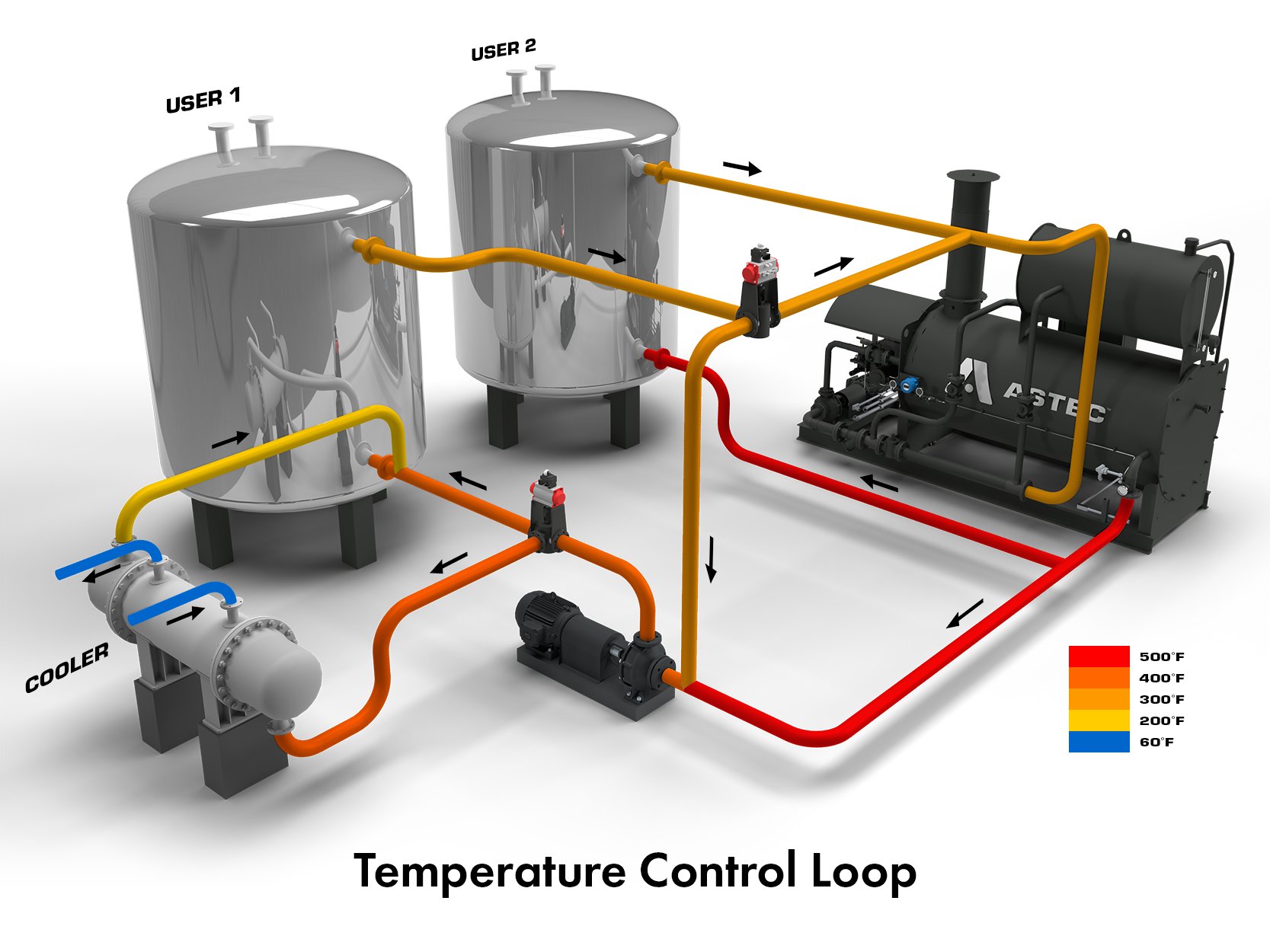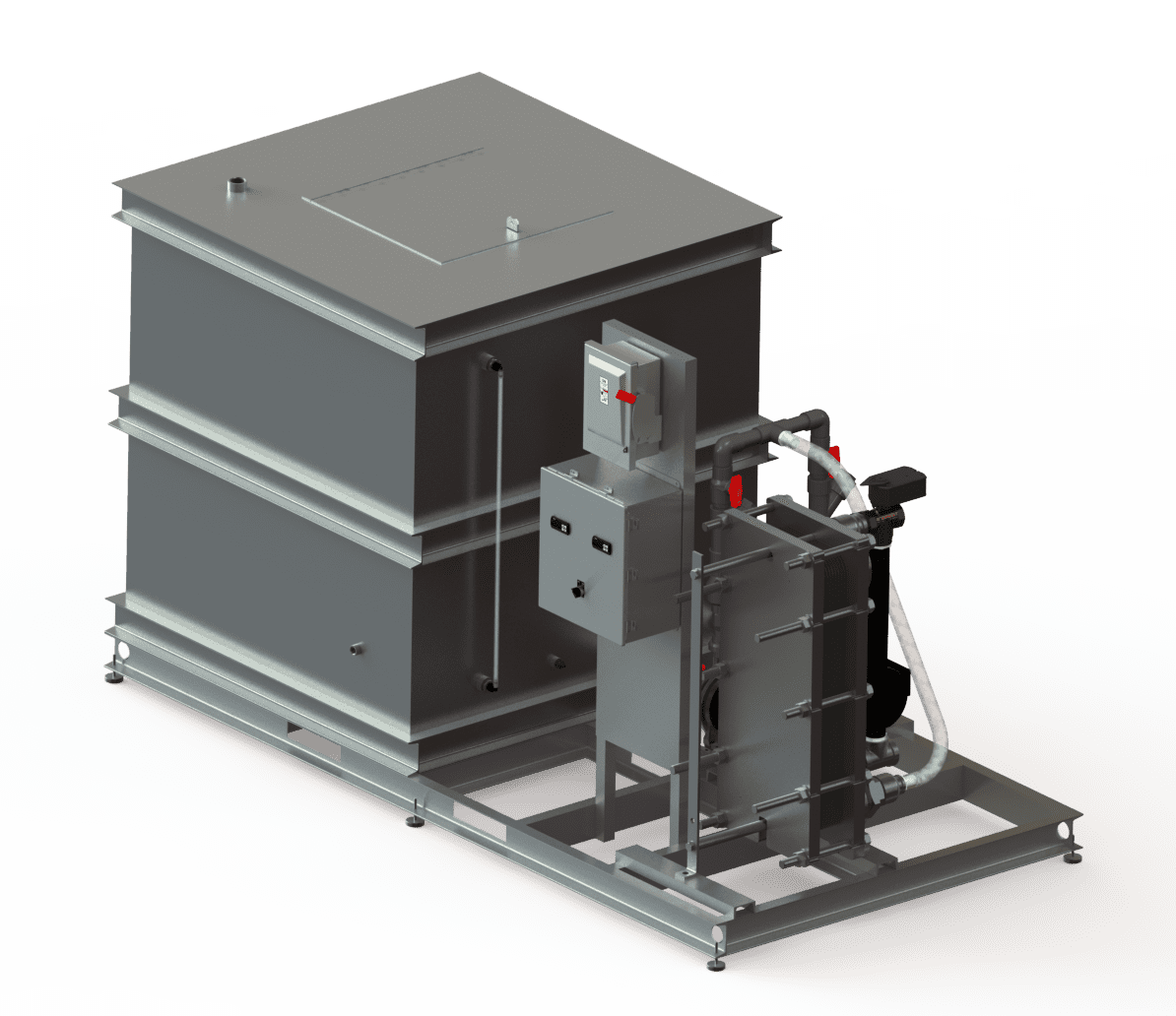A Comprehensive Overview to Choosing the Right Heat Transfer Systems for Your Demands
Choosing the appropriate Heat transfer system is necessary for operational effectiveness. Different systems satisfy different demands, affected by elements such as temperature level range and fluid type. Understanding the concepts behind Heat transfer, such as conduction, radiation, and convection, is vital. Additionally, evaluating power sources and upkeep methods can impact lasting efficiency. A closer evaluation of these considerations reveals exactly how to tailor a system to details needs. What should one prioritize in this complicated decision-making procedure?
Comprehending Heat Transfer: Trick Concepts and Concepts
Heat transfer might appear like a straightforward concept, it incorporates a range of concepts that are essential for effective system design - DVS Heat Transfer Systems. Recognizing these principles is important for developers and designers who aim to maximize thermal performance in numerous applications. Transmission, for example, entails the transfer of Heat with solid materials, while convection describes the movement of Heat within liquids. Radiation, one more essential principle, describes exactly how Heat can be moved through electro-magnetic waves. Each of these systems plays an essential function in determining exactly how power moves within a system. By extensively realizing these principles, professionals can make informed choices, guaranteeing that Heat transfer systems operate effectively and satisfy the particular needs of their applications
Kinds of Heat Transfer Equipments: An Introduction
Recognizing the concepts of Heat transfer lays the groundwork for discovering the various sorts of Heat transfer systems available. Heat transfer systems can be classified mostly into 3 kinds: conduction, radiation, and convection. Conduction entails Heat transfer through solid materials, counting on straight get in touch with between bits. Convection, on the other hand, takes place in fluids (fluids and gases) where the activity of the liquid itself assists in Heat transfer. Radiation entails the transfer of Heat through electro-magnetic waves and does not need a tool, allowing it to take place in a vacuum cleaner. Each kind of system has distinctive attributes and applications, making it essential for individuals and organizations to very carefully examine their specific demands when picking one of the most suitable Heat transfer solution.
Applications of Heat Transfer Systems in Different Industries
Heat transfer systems play an essential role across numerous sectors, impacting performance and product high quality. In commercial production procedures, they facilitate accurate temperature level control, while in food and beverage handling, they ensure safety and preservation. Additionally, HVAC and climate control systems count greatly on reliable Heat transfer to maintain comfortable atmospheres.
Industrial Manufacturing Processes

Various commercial manufacturing procedures count heavily on efficient Heat transfer systems to make best use of efficiency and enhance item quality. In sectors such as metalworking, Heat exchangers play an important duty in maintaining optimal temperatures during welding, spreading, and building. These systems ensure consistent Heat distribution, which is essential for attaining wanted material properties. In a similar way, in the chemical manufacturing industry, Heat transfer systems assist in exact temperature control throughout reactions, impacting return and safety and security. Additionally, in fabric production, effective Heat administration is crucial for coloring and finishing procedures, affecting shade consistency and material high quality. By choosing ideal Heat transfer innovations, producers can improve power efficiency and reduce functional expenses, inevitably resulting in a much more lasting and affordable production atmosphere.
Food and Beverage Handling
Effective Heat transfer systems are equally crucial in the food and drink handling industry, where keeping suitable temperature levels is vital for food safety and security and top quality. These systems play a vital duty in procedures such as pasteurization, sanitation, and food preparation, ensuring that products are safe for intake and retain their nutritional worth. Heat exchangers, for instance, successfully move Heat in between liquids, enhancing energy use while lessening temperature variations. Furthermore, refrigeration systems are essential for extending and protecting perishable items rack life. The option of Heat transfer innovation directly impacts operational performance and product integrity, making it necessary for food and beverage suppliers to pick the ideal systems customized to their specific processing requirements. This careful option inevitably contributes to consumer contentment and food safety.

Heating And Cooling and Environment Control
While many industries count on Heat transfer systems for efficiency, A/C (Home Heating, Air Flow, and Cooling) plays a vital duty in keeping indoor climate control throughout different setups. These systems use Heat transfer principles to manage temperature, air, and humidity quality, making certain comfort and safety and security in residential, business, and commercial atmospheres. Correctly made heating and cooling systems enhance energy performance, minimize operational prices, and reduce environmental effect. In business structures, as an example, effective climate control contributes to worker efficiency and consumer contentment. In industrial applications, cooling and heating systems help keep optimal conditions for devices procedure and item conservation. Picking the appropriate Heat transfer system is crucial for meeting details climate control needs and accomplishing overall system performance.
Evaluating Energy Sources for Heat Transfer Equipments
In evaluating power resources for Heat transfer systems, a comparison of renewable resource choices and nonrenewable fuel source factors to consider is crucial. Eco-friendly sources, such as solar and wind, deal sustainable options that can decrease ecological influence. On the other hand, nonrenewable fuel sources remain common because of their established facilities and power density, triggering a careful assessment of both alternatives.
Renewable Power Options

Fossil Fuel Considerations
Examining nonrenewable fuel source factors to consider is essential for the performance and sustainability of Heat transfer systems. Nonrenewable fuel sources, such as natural gas, oil, and coal, are conventional power resources that offer substantial Heat result, making them popular selections for household and industrial applications. Their ecological effect, consisting of greenhouse gas emissions and anchor resource exhaustion, raises worries. When choosing a warmth transfer system, it is vital to examine the availability, price, and governing aspects linked with these gas. Additionally, the effectiveness of nonrenewable fuel source systems need to be taken into consideration, as greater effectiveness can reduce some ecological disadvantages. Inevitably, a well balanced technique weighing performance and sustainability can assist decision-makers towards one of the most appropriate Heat transfer option for their specific needs.
Variables to Think About When Choosing a Heat Transfer System
Selecting an ideal Heat transfer system requires mindful consideration of numerous variables that can substantially influence efficiency and performance. One essential aspect is the operating temperature level variety, which dictates the products and design appropriate for the application. Additionally, the sort of fluid utilized in the system-- whether gas or fluid-- affects Heat transfer efficiency and compatibility. The system's size and capability should align with the specific requirements of the procedure to stay clear of inefficiencies. Energy source availability is additionally vital, influencing operating expense and sustainability. The installation environment, including space restraints and availability for upkeep, plays a considerable duty in system option. Ultimately, regulative conformity and safety and security requirements should be thought about to guarantee the system satisfies all lawful needs.
Upkeep and Performance Optimization for Heat Transfer Systems
Maintaining Heat transfer systems is important for making certain maximum efficiency and long life. Routine upkeep tasks, such as cleansing Heat exchangers and evaluating insulation, aid protect against performance losses because of fouling and thermal linking. In addition, monitoring system specifications, including pressure and temperature, enables early discovery of anomalies, lessening downtime and pricey repairs. Applying a precautionary upkeep routine can maximize efficiency and expand the lifespan of elements. Upgrading to innovative control systems can enhance operational efficiency by adjusting to differing lots and conditions. By prioritizing upkeep and efficiency optimization, drivers can attain decreased power consumption, reduced operational costs, and enhanced total system integrity, ultimately resulting in better source usage and a more lasting operation.
Future Trends in Heat Transfer Technologies
As sectors increasingly prioritize sustainability and energy efficiency, future patterns in Heat transfer technologies are set to go through significant makeovers. Developments such as advanced products, consisting of carbon nanotubes and nanofluids, assure boosted thermal conductivity and effectiveness. Furthermore, the assimilation of renewable resource sources right into Heat transfer systems is gaining momentum, promoting eco-friendly options. Smart innovations, including IoT sensors, are anticipated to revolutionize monitoring and control, enabling real-time information analysis for optimized performance. Furthermore, the advancement of modular and portable systems will facilitate easier setup and maintenance, satisfying diverse applications. These innovations indicate a shift towards even more lasting, efficient, and adaptable Heat transfer options, straightening with international energy objectives and ecological requirements.
Regularly Asked Inquiries
What Are the Environmental Impacts of Heat Transfer Solutions?
The ecological impacts of Heat transfer systems can include greenhouse gas emissions, energy consumption, and potential thermal air pollution. Furthermore, incorrect disposal of products and ineffectiveness can add to resource exhaustion and environment disturbance.
Just how Do I Calculate the Cost-Effectiveness of a Warmth Transfer System?
To compute the cost-effectiveness of a heat transfer system, one need to examine initial prices, operational expenses, upkeep demands, and click this link energy effectiveness, contrasting these aspects versus the anticipated lifespan and efficiency of the system.
Can Heat Transfer Solution Be Utilized in Residential Setups?
Heat transfer systems can undoubtedly be utilized in domestic setups. They give reliable heating and cooling down remedies, making homes a lot more comfortable while potentially reducing energy costs. Their flexibility permits different applications in property settings.
What Security Rules Apply to Heat Transfer Solutions?
Safety laws for Heat transfer systems commonly consist of standards on procedure, installation, and maintenance. Conformity with regional building ordinance, supplier requirements, and industry standards is important to guarantee effective and secure system performance in different applications.
How Do Various Products Affect Heat Transfer Performance?

Conduction, for circumstances, entails the transfer of Heat via solid materials, while convection refers to the movement of Heat within liquids. Understanding the principles of Heat transfer lays the groundwork for discovering the various types of Heat transfer systems readily available. Heat exchangers, for circumstances, efficiently move Heat between liquids, optimizing power usage while decreasing temperature fluctuations. In reviewing energy blog sources for Heat transfer systems, a contrast of renewable energy choices and fossil fuel considerations is crucial. Steels, such as copper and light weight aluminum, conduct Heat effectively, whereas insulators like rubber and glass slow down Heat flow.